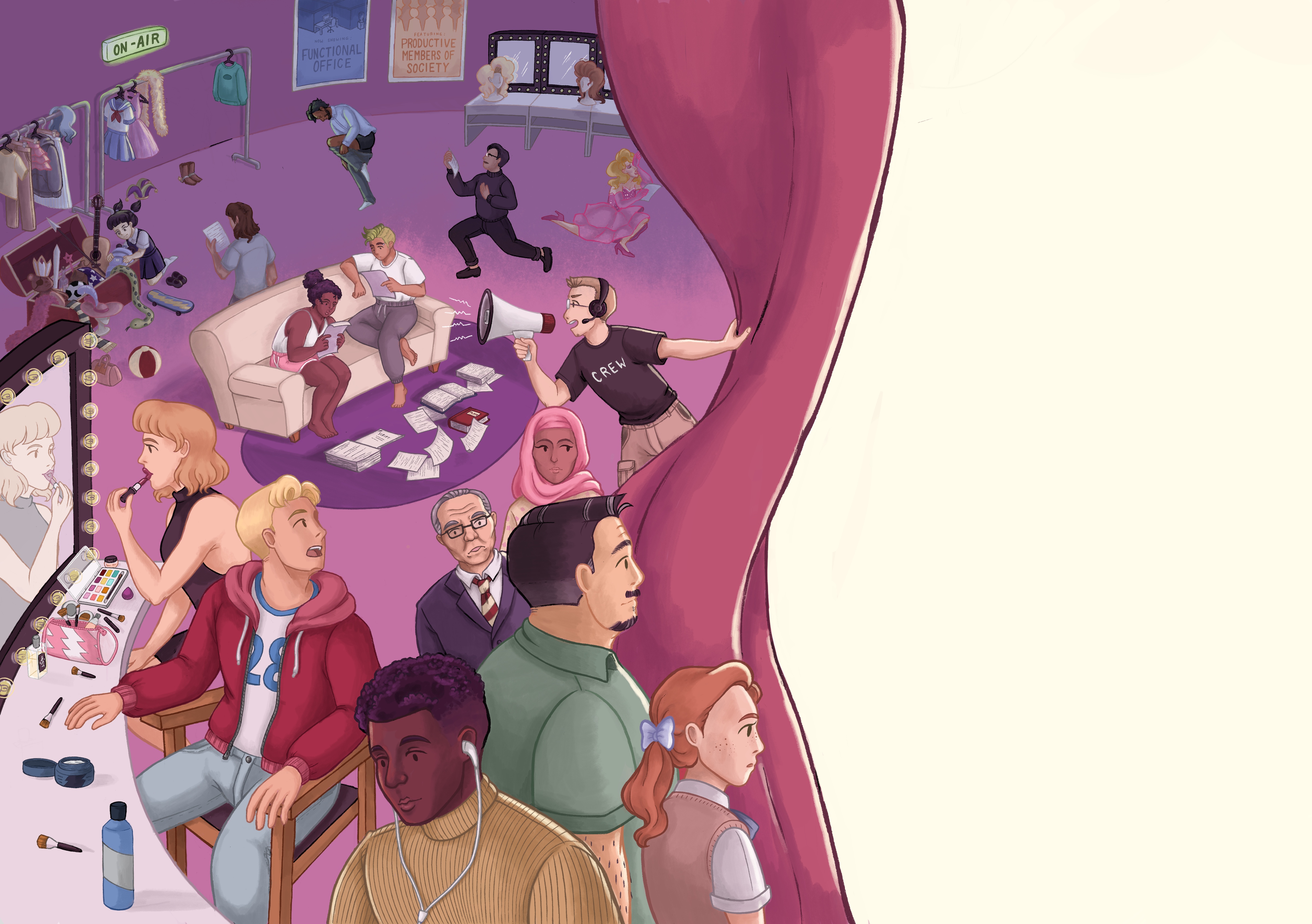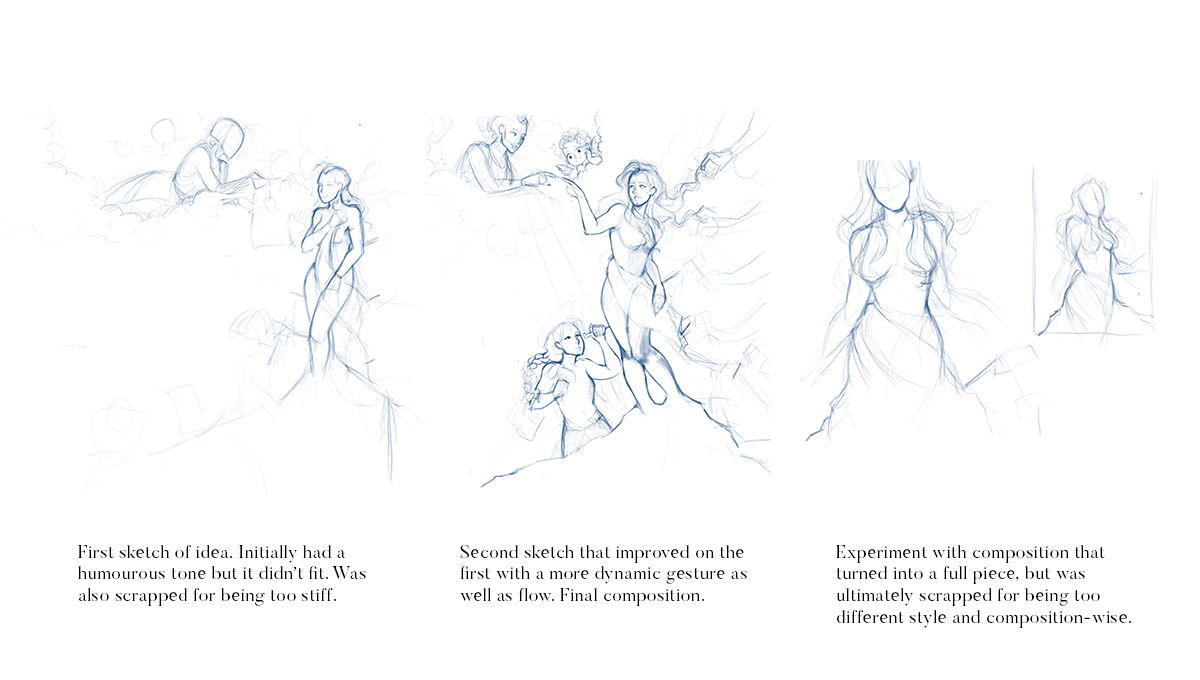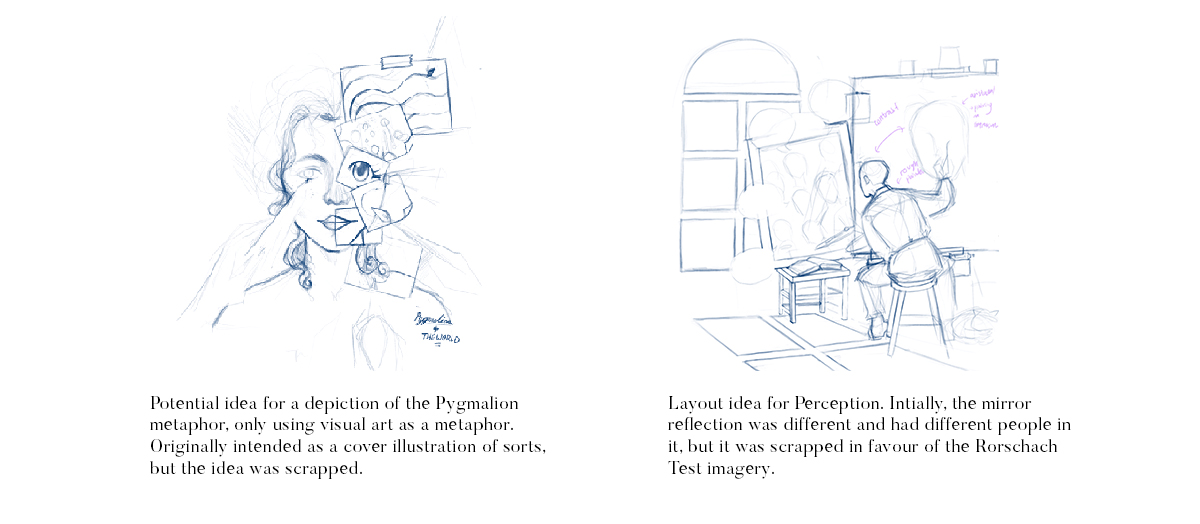Pygmalion vs. The World (2020)
A series of editorial illustrations based on my conclusions in investigating how identity is constructed through socialisation.
The brief of this project was to rediscover the world after the historic event of COVID-19, and a lot of it was up to interpretation. After going down several ‘threads’ of thoughts and ideas, I initially thought of how the pandemic has messed up with our perception of time and that time itself is a social construct, before pushing the idea further and thinking about what other concepts are social constructs as well, and I came to ‘identity’, which was my topic.
Through research into how identity is constructed (I.e. Judith Butler’s Gender Perfomativity and Charles Cooley’s The Looking Glass Self), I came to the narrative of “Performance + Perception = Identity”, with both of them being tied to socialisation. Hence, my structure of the project was a series of editorial illustrations in a theoretical publication that portrayed the concept of socialisation, then performativity, then perception.

To portray the concept of socialisation, I utilised the the Ancient myth of Pygmalion and Galatea (in which the King Pygmalion fell in love with the statue of the ideal woman he had sculpted and Aphrodite brought it to life) and incorporated the themes and ideas (constructed identity) of George Bernard Shaw’s play ‘Pygmalion’ which was named after the myth.
The final concept puts the person in the role of Pygmalion and their identity as the ideal figure they are sculpting, but the person is against the forces of the external world (society and socialisation), who are trying to sculpt the figure as well to their own ideal shape as well, hence ‘Pygmalion (the sculptor) vs. The World (External forces)’, demonstrating the idea of how identity is molded through socialisation.
The final concept puts the person in the role of Pygmalion and their identity as the ideal figure they are sculpting, but the person is against the forces of the external world (society and socialisation), who are trying to sculpt the figure as well to their own ideal shape as well, hence ‘Pygmalion (the sculptor) vs. The World (External forces)’, demonstrating the idea of how identity is molded through socialisation.

The illustration that portrays “Performativity” is relatively straightforward, and is the embodiment of the Shakespeare quote, “All the World’s a Stage and All the Men and Women merely players.”, or alternatively, RuPaul’s “We’re all born naked and the rest is drag”. The illustration is of ordinary people backstage all getting ready for when they are called up to stage to perform their role for the day. I opted for a slightly chaotic vibe in the illustration, to really capture the idea of how everyone is scrambling to play their societal role even though they might not show it.

The third illustration is of Perception, specifically the Looking Glass Self theory by sociologist Charles Horton Cooley, where we construct our perception of our identity based on our perception of others’ perception of us, so all these little fragments we gleam from others’ perceived reactions to ourselves eventually make up the whole of the identity we believe ourselves to have. I didn’t want to re-use the common diagram image of the theory, so I portrayed it through someone painting a self-portrait of themself after viewing themself through a mirror, heavily referencing Norman Rockwell’s “Triple Self-Portrait” for better clarity.
I also incorporated themes from The Picture of Dorian Gray as well as the concept of the Rorschach Test (which is perceived differently by everyone), and symbols relating to reflections like the windows. The final concept is of an artist painting a self-portrait of themselves based on their interpretation of themselves (like a Rorschach Test) in the mirror, which looks different from their actual self, showing how much of our ‘self’ and identity is made up from varying interpretations and perceptions.



The process sketches of the illustrations. The series portrays more on the process of identity making rather than the result, and all feature some form of artistic endeavour as a metaphor.
Click the link below for a more in-depth process:
Pygmalion vs. The World: The Process